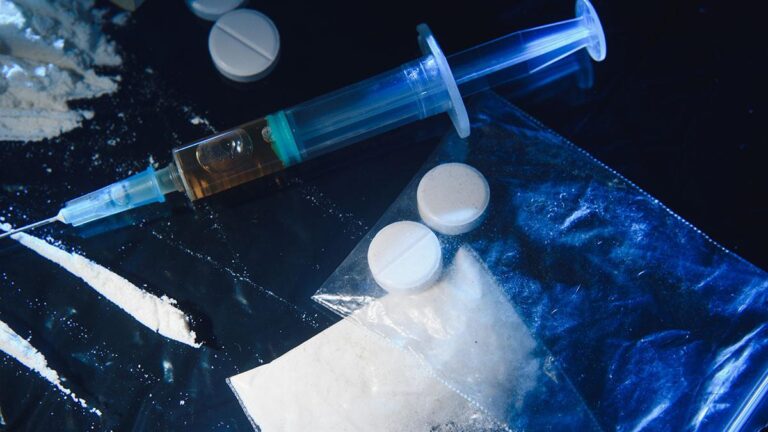The death toll from contaminated medical-use fentanyl in Argentina has risen to 87, with authorities warning the number could climb to 96 as investigations continue. Buenos Aires health officials confirmed the surge following the detection of dangerously adulterated fentanyl distributed through medical channels, prompting urgent calls for stricter regulation and oversight. The crisis has sparked nationwide concern over drug safety and the vulnerabilities within Argentina’s pharmaceutical supply chain.
Medical-Use Contaminated Fentanyl Causes Surge in Deaths Across Argentina
The recent spike in fatalities tied to contaminated medical-use fentanyl has alarmed health authorities and the public alike, with the confirmed death count reaching 87 individuals across Argentina. Preliminary investigations reveal that a batch of fentanyl, initially distributed for pain management in hospitals, was adulterated with unknown toxic substances. This contamination has not only overwhelmed emergency responders but also led to urgent recalls and stricter controls on opioid medications nationwide. Experts warn that the death toll could climb further, potentially reaching 96 victims, as authorities continue tracing affected pharmaceutical supplies and monitoring diagnosed cases.
Amid efforts to contain the crisis, officials have outlined key risk factors connected to the outbreak:
- Improper pharmaceutical storage: leading to chemical degradation.
- Unauthorized medication distribution channels: bypassing regulatory oversight.
- Delayed reporting and diagnosis: hampering timely intervention.
| Province | Confirmed Deaths | Suspected Cases |
|---|---|---|
| Buenos Aires | 45 | 12 |
| Córdoba | 18 | 8 |
| Santa Fe | 14 | 5 |
| Mendoza | 10 | 6 |
Health Authorities Investigate Sources and Distribution Channels of Toxic Fentanyl
Authorities in Argentina have escalated efforts to trace the origins of the toxic fentanyl linked to the recent spike in fatalities. Investigators are focusing on both medical supply chains and illicit distribution networks to determine how the contaminated drug infiltrated the market. Early findings suggest multiple points of contamination, including compromised pharmaceutical manufacturing and unauthorized diversion of medical fentanyl stocks. Law enforcement agencies are collaborating with health regulators to conduct thorough audits of hospitals, pharmacies, and medical distributors nationwide.
To aid the ongoing investigation, officials have compiled a list of focal areas where the toxic fentanyl has been detected or suspected:
- Medical institutions reporting unusual fentanyl-related adverse events
- Pharmaceutical wholesalers with irregular shipment records
- Street-level dealers implicated in recent overdose cases
- Cross-border trafficking routes susceptible to smuggling activities
| Sector | Number of Cases Linked | Status of Investigation |
|---|---|---|
| Hospitals & Clinics | 35 | Ongoing |
| Pharmacies | 22 | Under Review |
| Street Dealers | 30 | Active Surveillance |
| Border Checkpoints | 9 | Close Monitoring |
Urgent Calls for Stricter Regulations and Enhanced Monitoring to Prevent Further Fatalities
Authorities and health experts are demanding immediate implementation of more stringent controls surrounding the distribution and administration of fentanyl in medical settings. The alarming increase in fatalities linked to contaminated supplies highlights critical gaps in current regulatory frameworks. Calls center on enhancing oversight over production chains, rigorous batch testing, and tighter restrictions on prescribing practices to curb the ongoing crisis.
Key measures being proposed include:
- Mandatory real-time tracking of pharmaceutical shipments
- Increased funding for forensic analysis laboratories
- Comprehensive training programs for medical personnel on fentanyl handling
- Public transparency regarding contamination incidents and recall procedures
Experts warn that without these urgent reforms, the death toll could escalate beyond the current estimates, further burdening the healthcare system and public trust.
| Action Area | Proposed Initiative | Expected Outcome |
|---|---|---|
| Regulation | Stricter licensing for fentanyl manufacturers | Reduced risk of contaminated batches |
| Monitoring | 24/7 surveillance of supply chain integrity | Early detection of anomalies |
| Education | Mandatory fentanyl safety certifications | Improved handling and administration practices |
The Conclusion
As the death toll from contaminated medical-use fentanyl continues to climb in Argentina, authorities face mounting pressure to address the crisis and prevent further loss of life. With the confirmed fatalities now at 87 and the potential for the number to rise to 96, investigations remain ongoing to determine the source and scope of the contamination. Public health officials are urging caution and vigilance as they work to contain the outbreak and ensure the safety of medical supplies nationwide. The Buenos Aires Herald will continue to monitor developments and provide updates on this urgent public health issue.




